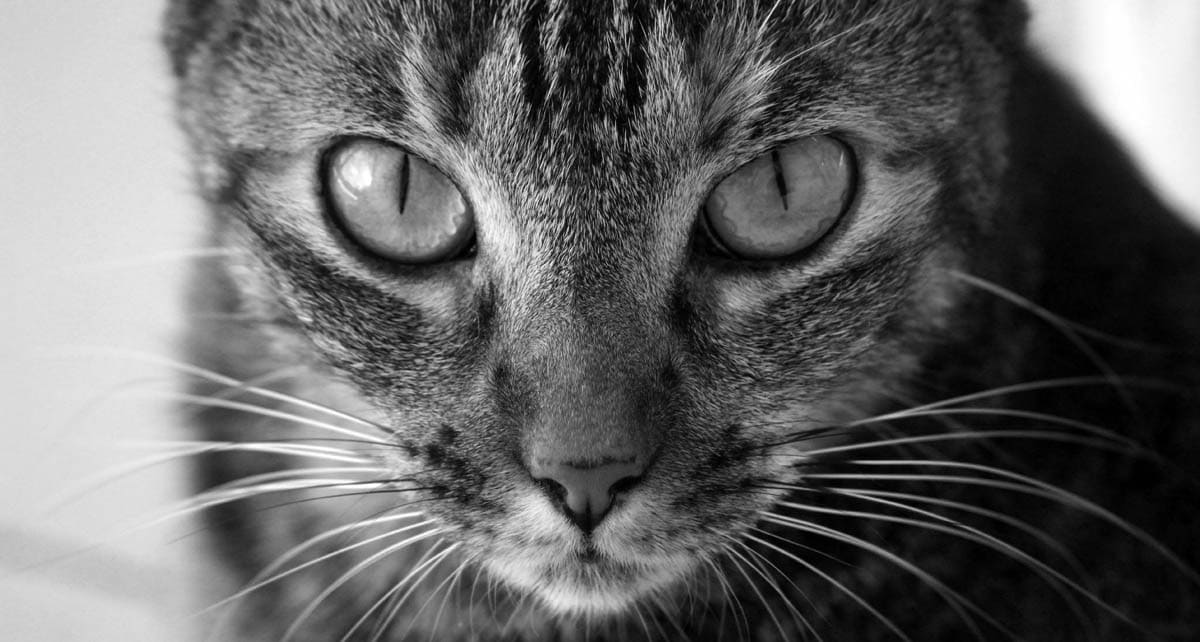Also called lenticular sclerosis, nuclear sclerosis (NS) is a common age-related change in the nuclear (central portion) of the crystalline lens of the eye which results in a glue/grey hue in the centre of the eye.
Nuclear sclerosis usually becomes noticeable after the age of seven.
Causes
The role of the lens is to direct and focus light onto the retina, at the back of the eye. The lens is composed of 65% water and 35% protein and is surrounded by a clear capsule with a thin epithelium (membranous tissue composed of one or more layers of cells that form the covering of most internal and external surfaces of the body and its organs) located on the interior side. The lens itself is composed of multiple layers of long, thin, transparent fibres arranged like that of an onion.
During the cat’s lifetime, the epithelium continues to produce new fibres. Because the lens is unable to stretch to accommodate these additional fibres, it packs the older fibres closer together towards the centre of the lens. This compression causes the lens to cloud over and harden.
Symptoms
It is common for pet owners to confuse nuclear sclerosis with cataracts, which has a similar appearance. However, unlike cataracts, nuclear sclerosis doesn’t affect the cat’s vision as the lens fibres remain in their normal arrangements. A cataract forms when the fibres within the lens clump together.
In most cases, nuclear sclerosis develops in both eyes (bilateral), whereas cataracts often develop in just one eye (unilateral).
The main symptom of nuclear sclerosis is a blue/grey translucent haze to the lens which begins in the central part. The cat’s vision remains normal.
Diagnosis
If you notice any ocular changes, see your veterinarian. While nuclear sclerosis is not serious, cataracts are, not only that; cataracts can be a symptom of an underlying systemic disease.
Your veterinarian will perform a physical examination of your cat and obtain a medical history from you. A thorough eye examination will be necessary to differentiate nuclear sclerosis from the more serious cataracts.
Penlight examination: A simple way to diagnose nuclear sclerosis is by shining a penlight into the eye.
- Medication is applied to the eye before the examination to dilate (enlarge) the pupil.
- If the cat has nuclear sclerosis, the veterinarian will see a reflection from the tapetum (a specialised layer of flat cells found beneath the retina) when a light is shone into the eye. If the cat has cataracts, it will not be possible to see the tapetum.
Treatment
As nuclear sclerosis is not painful and does it impact vision, no treatment is necessary.
Conclusion
While nuclear sclerosis is not a serious or painful condition, age-related changes are common in cats, including deteriorating vision. This highlights the importance of bi-annual veterinary visits once your cat reaches seven years of age. When picked up early, many age-related conditions can be managed, which will slow down the progression.
As always, pet owners need to keep a close eye on their cats for changes in appearance, behaviour, eating and toilet habits. If you do notice anything, speak to your veterinarian.
Common age-related eye problems in cats include:
- Glaucoma
- Retinal detachment
- Cataracts

